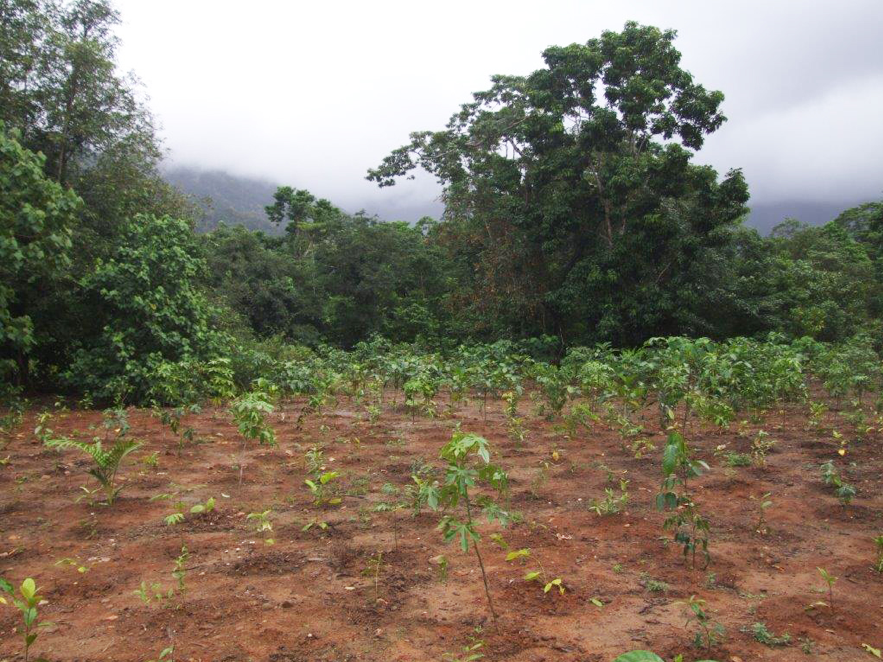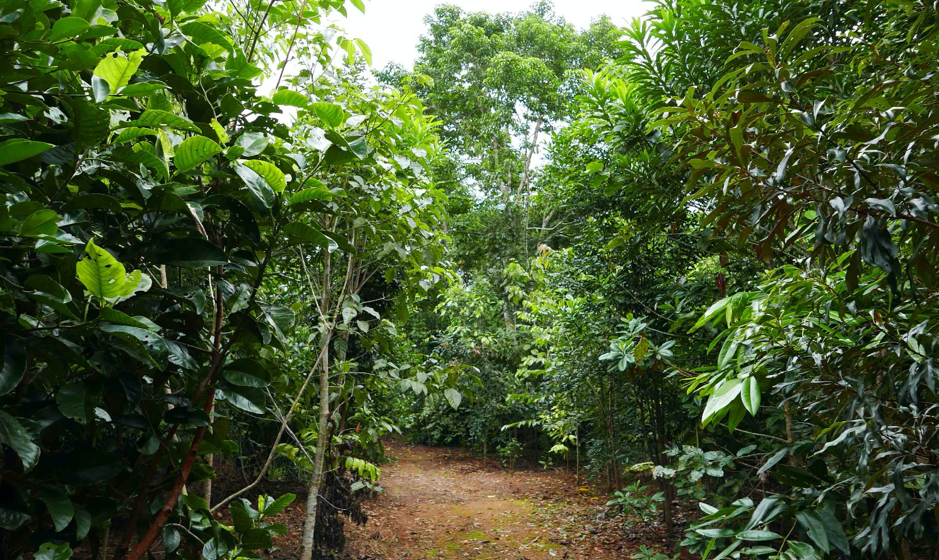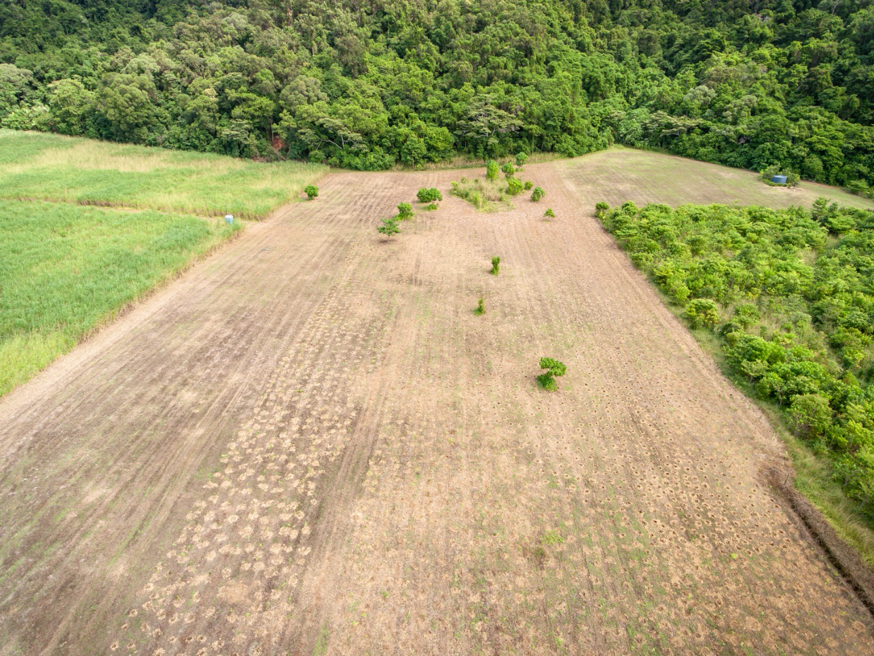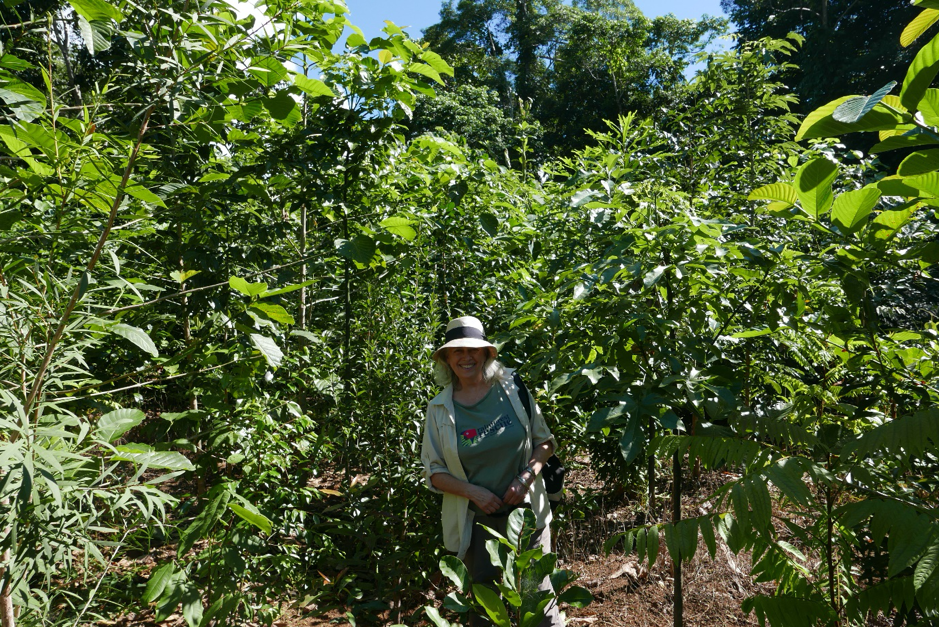It’s all about ‘from the ground up’…
It’s all about ‘from the ground up’…For decades we’ve been working in rainforest restoration and are proud of what these efforts have achieved. This restoration work has primarily focused on semi cleared or weed infested sites within the Daintree Lowland area where the soil is friable and blessed with some valuable nutrients and consistent moisture. In this setting, the young biodiversity of seedlings we plant immediately respond with quite remarkable growth. Very gratifying to see them reaching for the sky, creating a closing canopy within a couple of years, and rapidly demonstrating the multi-tiered structure of plant life that defines tropical (and subtropical) rainforests.

Figure 1 Lot 46-optimum planting conditions
How wonderful, we hear you say. And it is because it encourages us to do more restoration work and share more of these success stories with you.

Figure 2 Tree growth after 4 years – no looking back!
But what happens when we’re asked to commit to a major rainforest restoration on cleared and degraded ex-agricultural land? This certainly becomes a learning experience, but we love a good challenge!

Figure 3 Nightwings ready to plant (Marty Stringer)- highlights degraded soil
Problem 1 – the soil on the site has been bombarded for many years with chemicals, sprayed against insect damage on the sugarcane, had large machinery compacting it and undermining its friability. Problem 2 – over all those many years of being an agricultural site, the soil has accumulated an abundance of weed species as seed reserves, lying in wait for an opportunity to germinate. As soon as we began the process of turning the site back into rainforest, those weed seeds also began to germinate and grow. Serious competition for the young tree seedlings, both above and below ground. Problem 3 – The soil had low nutrient value and was the opposite of friable.
In total, not very friendly soil at all. It’s no wonder we were concerned. Our robust little tree seedlings were ready to burst forth. How could we ensure that this would take place?
Solution 1 – Focus on a planting model that involves high diversity and close spacings of the seedlings in order to create growth and positive interactions. Most weed species have low tolerance for shading, so rapidly creating a rainforest canopy controls the weeds.
Solution 2 – Plant tree species so there is a fast growing species surrounded by mixed species with different growth strategies and growth rates. This mixture of tree species truly enjoy one another’s company!
Solution 3 – This accelerated growth model leads to rapid canopy closure. The leaves that fall from the canopy accumulate, decompose, and add nutrients to the soil and stabilise the site.
Results –
These are definitely worth talking about. Our committed Daintree staff have incorporated this planting model and site preparation methods, and the results are both impressive and exciting! Growth of the tree seedlings has been spectacular, and the weeds are losing the battle. But these two staffers haven’t stopped there. They are also directing their focus on ways to fine tune the planting designs and increase the soil fertility. This sort of ‘context specific’ site innovation plays an important role in Rainforest Rescue’s capacity to deal with a range of restoration situations.
It’s all about ‘from the ground up’…

Figure 4 Nightwings success! Our Chair in her element.
Want more good Rainforest news in your life?
Subscribe to our eNews | Follow us on Instagram | Like us on Facebook | Subscribe to our YouTube channel
Help Protect Rainforests Forever
Donate to Protect Rainforests Forever | Become a Rainforest Guardian for as little as $2 a month | Partnership Options

